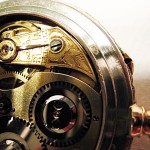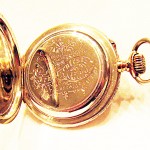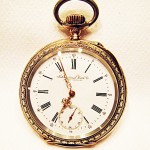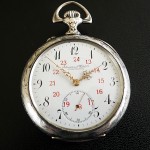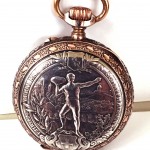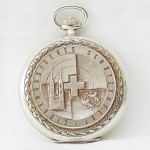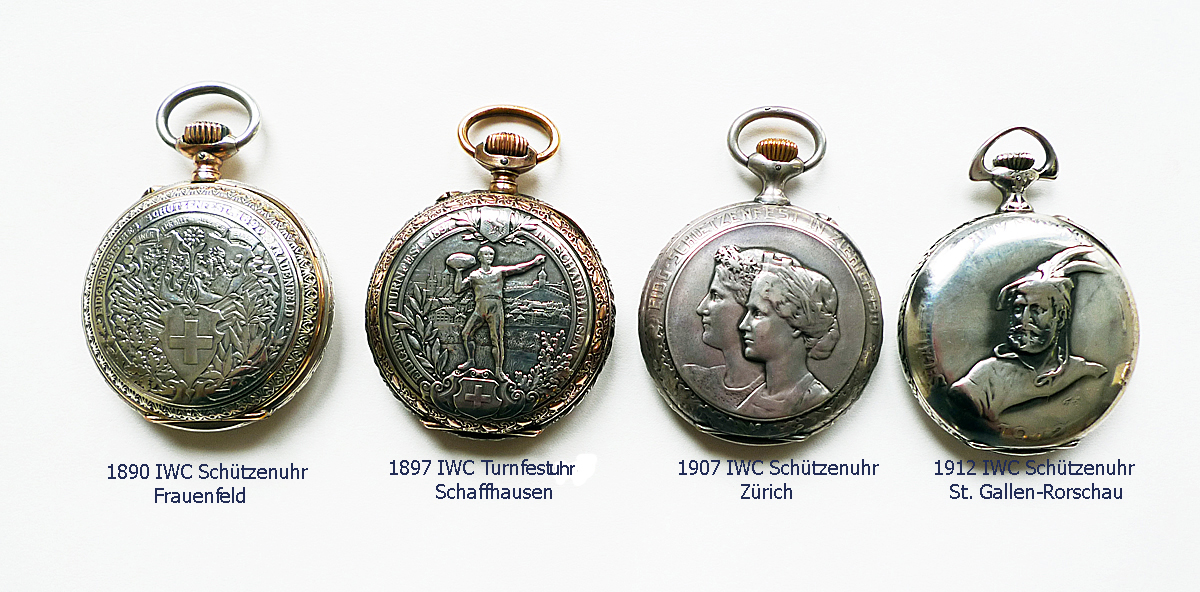
Switzerland and Germany had a tradition of awarding pocket watches as prizes in competitions. In Swiss tradition, national marksmanship competitions were held. Each “Schützenfest” awarded watches as prizes to winners, and these prize watches are known as Schützenuhren. Some of competitions involved riflery, but others involved cross-bows in the William Tell tradition. From 1890 until 1995, special IWC pocket watches often were selected by the organizers as prizes.
Often silver cased, the case backs and fronts had elaborate engravings or embossing relating to the festivals. Since many of these competitions were held in eastern Switzerland, IWC as the quality manufacture in the region frequently supplied the prize watches.
Pictured above are examples of prize watches from Schützenfests held in Frauenfeld (1890), Zurich (1907), and Rorschau (1912). The first one contains an early IWC Calibre (Calibre 49) movement, and latter ones contain the successor Calibre 52 movement. The second watch above is a rare prize watch awarded as a prize in an athletic competition or “Turnfest” in Schaffhausen during 1897. The back depicts a competitor throwing a heavy stone, with Schaffhausen’s Munot fortress in the background.
These images show the intricate detail on the early Schützenuhren. The image on the left shows the artistic engraving of the balance cock of the 1890 watch. The image to the right shows additional engraving on the watch’s inside dust cover.
The dials of these watches is shown here. The one on the left is from the 1890 watch, while that on the right is from 1912.
Cases, old and new. The one on the left if enlarged shows a close-up in fine detail of the 1887 caseback, while a modern Schützenuhr’s case is on the right.


